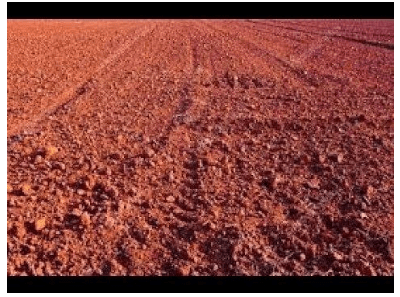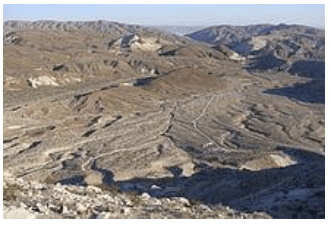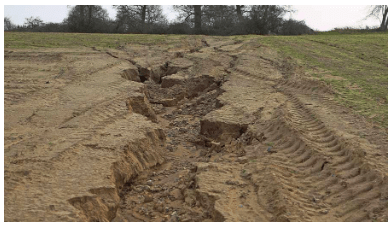Class 10 Geography Chapter 1 Question Answers - Resources and Development
Q.1. What are the steps involved in the complex process of resource planning? Why is resource planning important in the context of a country like India?
Ans. Resource planning is a complex process which involves:
(a) Identification of resources across the country through surveying, mapping and preparation of an inventory of resources through their quantitative and qualitative estimation and measurement.
(b) Develop a planning structure for resource development, taking into account technology, skill and infrastructure available for implementing the plans.
(c) Matching the resource development plans with overall national development plans. This involves systematic planning of the exploitation of resources. Resource planning is important in a country like India, which has enormous diversity in the availability of resources. While some regions are rich in certain types of resources, they may be deficient in some other types of resources. For example, a mineral-rich region may be poor in infrastructure or maybe socio-culturally backward and included in economically backward regions.
Some regions are self-sufficient in terms of availability of resources, while, on the other hand, there are regions that face an acute shortage of resources. Thus, for proper development, distribution, sharing, and utilization of resources, taking into consideration the technology, quality of human resources and historical experiences of the people, resource planning is essential for development. India has made concerted efforts to achieve the goals of resource planning right from the First Five-Year Plan launched after Independence.
Q.2. What are the main types of soil found in India? Which type of soil is the most widespread and important soil of India? Describe in detail about this soil type.
Ans. The main types of soil found in various parts of India are as follows:
(a) Alluvial soil.
(b) Black soil.
(c) Red and yellow soil
(d) Laterite soil
(e) Arid or Desert soil.
(f) Forest and Mountainous soil.
Alluvial soil is the most fertile, widespread and important soil of India.
 Laterite soil
Laterite soil
They are riverine soil transported and deposited by the three great river systems - the Indus, the Ganga and Brahmaputra - which have formed the entire Northern Plains. They are also found in the deltas of the Mahanadi, the Godavari, the Krishna and the Kaveri rivers along the Eastern Coastal plains. They also extend in a narrow corridor to Rajasthan and Gujarat.

The fertility of the alluvial soil has made the Northern Plains and the Eastern Coastal Plain the most productive agricultural regions of India, with a high-density population. The alluvial soil contains an adequate proportion of potash, phosphoric acid and lime, which are ideal for the cultivation of paddy, wheat, other cereals, pulses and sugarcane. The alluvial soil consists of various proportions of sand, silt, and clay. The soil near the floodplain is more or less fine and in the deltas, they are finest.

They are coarse in the upper reaches of the river valley, especially near breaks of slope and in pediment plains like Duars, Chos and Terai. Alluvial soils are renewed every year during annual floods. The new, fertile, light-colored and fine alluvial deposited near the river is called khadar. The old alluvial deposited earlier are found at about 30 meters above the flood level of the rivers. They are clayey, dark in color, coarse with kanker nodules and less fertile.
Q.3. What is soil erosion? How do human activities and natural forces cause soil erosion? Suggest measures of soil conservation in hilly and mountainous areas and in desert areas.
Ans. The denudation or destruction of the soil cover and their subsequent natural removal is termed as soil erosion. Human activities, as well as natural forces, cause denudation of the topsoil. The soil nutrients are subsequently washed away by running water or blown away by wind. Human activities like deforestation, overgrazing, construction and mining, and faulty farming methods lead to soil erosion.
 Eroded soil
Eroded soil
Natural forces like wind, water and glaciers can cause soil erosion. Surface runoff leads to the formation of gullies, badlands and ravines by cutting out channels in the soil. Entire topsoil may be washed off under the impact of sheet erosion caused by large water flows down a slope. Loose soil may be blown away by wind easily. In hilly and mountainous areas, the following measures can help to control soil erosion:
(a) Contour ploughing or ploughing along the contour lines of a highland can decelerate the flow of water down the slopes.
(b) Terrace cultivation or cutting of steps around the slopes to provide land for agriculture also checks the downhill flow of water and controls soil erosion, e.g. as in the Western and Central Himalayan regions.
(c) Afforestation can help in soil conservation in hilly areas. In dry desert areas, planting of rows of trees known as shelter belts to check the velocity of wind can control soil erosion. These shelter belts have contributed significantly to the stabilization of sand dunes and checking the spread of desert in Western India.
Q.4. What is the need for ‘conservation of resources’? Elucidate in the light of Gandhiji’s view.
Ans. Irrational consumption and over-exploitation of resources without consideration for future generations have led to grave socio-economic and environmental problems. Social and economic distinctions on the basis of haves and have-nots and global ecological problems like global warming, ozone layer depletion, environmental pollution and land degradation are all consequences of uncontrolled exploitation of resources. To overcome these problems and to preserve resources for future generations, the conservation of resources is essential.
Gandhiji expressed his concern about resource conservation through these words, “There is enough for everybody’s need but not for anybody’s greed.” According to Gandhiji, greedy and selfish individuals and the exploitative nature of modern technology are the root causes of resource depletion at the global level. He advocated production by the masses and was against mass production, which led to the uncontrolled exploitation of resources.
Accumulation of resources in a few hands due to indiscriminate exploitation of resources has divided society into rich and poor. An equitable distribution of resources has become essential for sustained quality of life and global peace. This can reduce tension between countries and lead to planned and judicious use of resources. Similarly, the conservation of resources can also help tackle ecological crises of the global level.
|
66 videos|614 docs|79 tests
|
FAQs on Class 10 Geography Chapter 1 Question Answers - Resources and Development
| 1. What are the different types of resources? |  |
| 2. How are natural resources classified? |  |
| 3. What is sustainable development? |  |
| 4. How can we conserve natural resources? |  |
| 5. What are the challenges in resource management? |  |

















